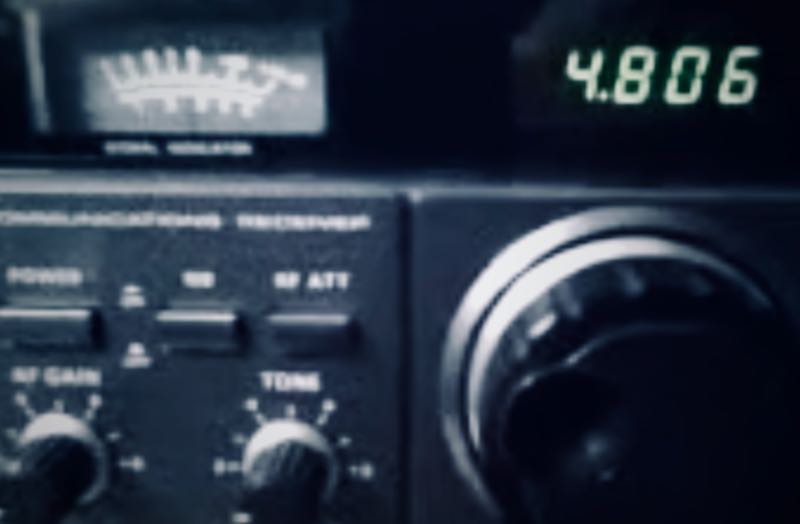Many thanks to SWLing Post contributor, Jim Meirose, who recently logged a mystery signal and is asking for our help to identify it. Jim notes that it sounds much like a time signal and can be found on 4,806 kHz.
Jim lives in the north east US and is receiving the station each morning between about 5:00 – 8:00 EDT (9:00 – 12:00 UTC). He shares the following video:
Based on Jim’s description, I thought this might even be a local noise, but after hearing the audio and since the signal is following morning propagation, I’m guessing the source could be in Europe or possibly regions further east–?
SWLing Post community: Can you help ID this station? Please comment!


I’m a HAM in Virginia. This is definitely CODAR. If you just listen on a single frequency, all you hear is a “blip” as the signal sweeps through your receiver’s passband. If you look at larger frequency span on an SDR, you can see the whole sweep. Right now I’m seeing it from ~4466 through 4492KHz, 4524 through 4550KHz and 4562 through 4589KHz. I took a screen-capture from my SDR, but can’t figure out how to attach it to this comment. But if you look at the SigIDWiki site and search for CODAR, there’s some good pictures there.
Chris
K6PG/4
Yes I feel this is certainly some sort of beacon, based in US.
Since I found the first on 4.896 I have foun several others like this between 4 and 5 MHZ generally.
Thanks for the comments and help.
Also, I found this site re these kinds of signals and more at https://www.sigidwiki.com/wiki/Category:Active
Best, Jim
Geee…it sounds like Russian Sputnik?
According to the Dxing.com website – (“Tuning 150 kHz to 30 MHz”), the frequency range from 4438 to 4650 kHz is mainly used for fixed and mobile stations in USB.
I have the following memory presets entered into my Tecsun PL-880 as Navigation Beacons or CODAR frequencies (which I have monitored in the evening hours):
• 4450 kHz
• 4485 kHz
• 4510 kHz
• 4525 kHz
• 4540 kHz
• 4575 kHz
• 4740 kHz
• 4775 kHz
Interestingly, the last two frequencies listed above (4740 and 4775 kHz), and your 4806 kHz frequency, are technically within the 60-m international broadcast band. Nevertheless, your recording sounds to me like an NDB or CODAR.
I’ve heard the same thing
I agree, CODAR.
Possibly a fishing vessel’s beacon. Although I believe they do have a CW ID at some interval. Good luck, John Blaisdell – W4CJB
I have been hearing this signal very strong on 40m on and off since 2018:
https://youtu.be/34358bhVfWw
Angel WA2VUY
This is just CODAR.
Sub channel marker ?! OR sub Pip station after 3756 kHz
based on the frequency and time of day it was recorded I’d say it’s a fishing bouy location sounder, probably for a fleet of deep nets in one area.
Sounds like this may be the tail end of a CODAR sweep. https://en.wikipedia.org/wiki/Coastal_ocean_dynamics_applications_radar.
I hear these signals all the time at my QTH (Wilmington, DE) at various spots between 4.5-5.0 Mhz.
CODAR is used to measure ocean wave heights and direction/speed of travel. I figure that I’m hearing transmitters positioned on the NJ coast. Sweep looks really cool on the SDR waterfall. Interferes occasionally with my listening to the Brazilian on 4.885 Mhz.
Couple tips
First of all try using some web based sdrs (websdr/kiwisdr) to coarsely triangulate the signal and also to get some better recording
Then, try asking for further help to the sigid folks https://www.sigidwiki.com/wiki/Signal_Identification_Guide
I think that it may be a good line of action
I never tried 4.806 kHz but in April I found strange signals very similar to time pips which pointed to a Ti.e Signal Station. The frequencies I heard were 1767,55 – 1769,19 – 1770,84 – 1772,47 and 1774,11 kHz. They were almost identical to those aired by a time signal station, but they weren’t.
QSB happening soon in the morning pointed to eastern side of the continent and SDR situated in the Baltic area suggested a source from Russia or Baltic-Russian area.
These signals still remain UNid but seems to be linked to military transmissions from Russian army; even they are known as Russian Pips.
Maybe are also transmitted around 5.000 kHz.
Saludos,
Jorge (@IberiaDX). Spain